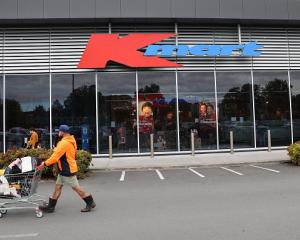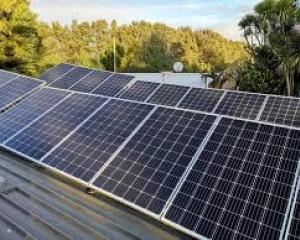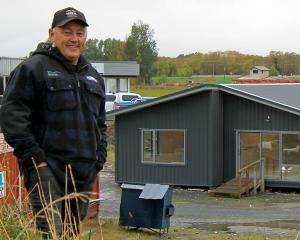 A first-of-its-kind, region-by-region breakdown of New Zealand's big emission drivers has singled out Canterbury and Otago's cows alongside Auckland's cars.
A first-of-its-kind, region-by-region breakdown of New Zealand's big emission drivers has singled out Canterbury and Otago's cows alongside Auckland's cars.
The just-released Stats NZ report found that, while about two thirds of regions recorded drops in greenhouse gas emissions between 2007 and 2018, those gains were offset by rises in four regions – Bay of Plenty, Canterbury, Otago and Southland.
That brought the total reduction in emissions over that decade to just 1 per cent, at a time the Government is trying to drive down emissions to two thirds of 2005 levels by end of this decade.
The largest falls were recorded in Auckland, down 955 kilotonnes (kt), or 7.8 per cent, Taranaki, down 707 kt (11.3 per cent), Northland, down 545kt (10.8 per cent), and Waikato, down 272kt (2 per cent).
Over the same period, emissions climbed in Canterbury, up 1,175 kt (11 per cent), Bay of Plenty, up 356kt (11.9 per cent), Southland, up 335kt (6.2 per cent), and Otago, up 333kt (7 per cent).
"This is the first comprehensive picture we have been able to develop to show where emissions are being produced in New Zealand and which regions are driving the changes in emissions," Stats NZ's environmental-economic accounts manager Stephen Oakley said.
The data factored in a range of drivers – mainly households and industries - in each region.
"Industrial emissions, from either primary industries, goods-producing industries, or service industries, can be affected by a number of factors, such as structural changes to the local economy, changes in technology, or efficiency gains."
The big drop in Auckland's emissions mostly came from the goods-producing industries, where emissions fell by 1675kt, or 25 per cent, on the back of decreases in the electricity, gas, water, and waste services industry.
But those gains were countered by rises in the services industries (up 15 per cent) and household emissions (up 18 per cent), which resulted in the overall 7.8 per cent reduction.
"The rise in Auckland's household emissions is largely due to its growing population, leading to increased car emissions, and increased fuel use," Oakley said.
In Canterbury and Otago, increases in overall emissions were driven largely by the primary industries, specifically by increases in emissions from these regions' expanding dairy cattle numbers.
In Bay of Plenty, the increase was due to a combination of increasing household emissions and increasing emissions from goods-producing industries, particularly the electricity, gas, water, and waste services industry.
Southland's increase in greenhouse gas emissions was also largely driven by goods-producing industries, particularly manufacturing, and primary industries, which was mainly due to dairy.
Three regions accounted for just under half of total emissions in 2018.
In 2018, Auckland, Waikato, and Canterbury combined accounted for 47 per cent of total regional emissions.
The regions with the least emissions were Marlborough, Tasman/Nelson, West Coast, and Gisborne, altogether accounting for just 5.8 per cent of emissions.
In 2018, the top three emitting regions accounted for 54 per cent of both carbon dioxide (CO2) and fluorinated gases - but only 40 per cent of methane and 45 per cent of nitrous oxide emissions.
Auckland generated the most , Canterbury the most methane While Waikato had the highest greenhouse gas emissions of any region in 2018, Auckland recorded the highest emissions of carbon dioxide, which were driven by households and manufacturing.
Auckland also had the highest levels of fluorinated gases, largely produced by the service industries (excluding transport, postal, and warehousing).
Canterbury recorded the highest methane and nitrous oxide emissions in 2018, largely due to emissions from agriculture.
The new data comes a month after Stats NZ reported that emissions from Kiwi households have swelled by almost 12 per cent over a decade – partly because of road trips around the country - and now nearly match those of our manufacturing industries.
Between 2007 and 2018, direct greenhouse gas emissions from households grew by 11.8 per cent – or the equivalent of more than a megatonne of CO2 equivalent.
Under the Paris Agreement, New Zealand has pledged to slash emissions by 30 per cent below 2005 levels, and 11 per cent below 1990 levels, by 2030.
Climate Change Minister James Shaw has tasked the recently-formed Climate Change Commission to investigate whether those targets – which sit alongside the Government's zero-carbon 2050 goal – are ambitious enough to meet the UN's aspirational target of limiting warming to 1.5C above pre-industrial levels.
Stuff reported this month that Ministry for the Environment officials have already told Shaw that New Zealand's Paris Agreement targets allowed some 85 million tonnes more emissions this decade than would be compatible with a 1.5C goal.












